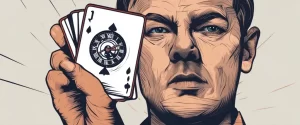——Writing Down the Bones by Natalie Goldberg & The Art of the Novel by Milan Kundera

In the vast realm of literature, numerous authors have attempted to unravel the depth and intricacy of the written word, offering invaluable insights into the craft of writing. Two such literary luminaries, Natalie Goldberg and Milan Kundera, have crafted seminal works that delve into the artistry of writing. “Writing Down the Bones” by Goldberg and “The Art of the Novel” by Kundera are both revered as essential resources for aspiring writers and enthusiasts alike. While both texts explore the creative process and the essence of storytelling, they diverge in their approach, focus, and the philosophical undercurrents they present.
Writing Down the Bones” serves as a beacon of inspiration and encouragement for individuals yearning to unlock their creative potential. Published in 1986, Natalie Goldberg’s celebrated work eschews traditional writing advice and instead implores readers to embrace the vastness of their inner worlds. By advocating the concept of “writing practice,” Goldberg proposes a method of tapping into the profound depth of one’s experiences, emotions, and connections to the world. Writing, according to Goldberg, is a means of self-discovery and growth, as well as a conduit for unfiltered expression. As readers immerse themselves in Goldberg’s pragmatic yet deeply personal guidance, they embark on a journey towards understanding the transformative power of writing.
On the other hand, Milan Kundera’s “The Art of the Novel,” first published in 1985, takes a nuanced and philosophical approach to the craft. Kundera, a celebrated Czech-French author and essayist, explores the multifaceted nature of fiction and its relationship with the human condition. Through a series of intricate essays and reflections, Kundera examines the underlying complexities of the novel as an art form, addressing themes such as authorial intent, narrative structure, and the interplay between reality and imagination. By delving into the profound roots of literature, Kundera encourages a deep introspection into the very essence of storytelling, arousing readers’ curiosity about the intricate workings of the fictional world.
While both Goldberg and Kundera provide profound insights into the intricacies of writing, their respective works offer distinct approaches to the craft. Goldberg’s “Writing Down the Bones” emphasizes the immediacy and spontaneity of writing, prompting readers to immerse themselves fully and authentically in the act of creation. Through her personal anecdotes and practical exercises, Goldberg paves the way for writers to embrace vulnerability and bypass the inhibitions that often hinder creative expression. In contrast, Kundera’s “The Art of the Novel” delves into the intellectual and philosophical dimensions of literature, challenging readers to examine the hidden layers and profound implications of the stories they tell.
This comparative study aims to explore the similarities and differences between these two seminal works, ultimately shedding light on the diverse ways in which authors attempt to unlock the wonders of writing. By examining the techniques, ideologies, and perspectives put forth by Goldberg and Kundera, we gain a more comprehensive understanding of the art of writing, allowing us to glimpse its endless potential for self-discovery, creativity, and human connection.
Brief Summary of Two Books
Writing Down the Bones by Natalie Goldberg
Writing Down the Bones: Freeing the Writer Within by Natalie Goldberg is a book that seeks to inspire and guide aspiring writers towards the practice of writing with freedom and authenticity. Drawing from her own experiences as a writer and Zen practitioner, Goldberg presents a collection of essays and writing exercises that encourage a “mindful” approach to writing.
Goldberg emphasizes the importance of learning to silence our internal critic and getting in touch with our genuine voices as writers. She promotes the idea of “writing practice,” which involves setting aside regular time for writing and allowing the words to flow without judgment or self-censorship. Through this consistent practice, writers can access their true emotions, memories, and observations, and let them unfold naturally on the page.
The book teaches the art of capturing the present moment, using vivid and detailed descriptions to bring the reader deeply into the writer’s experience. Goldberg urges writers to trust their own unique perspectives and to write with honesty, even if it means confronting uncomfortable truths or vulnerabilities.
With an emphasis on process over product, Goldberg urges writers to let go of the need for perfection and embrace the imperfections and rough edges of their writing. She encourages writers to cultivate a sense of curiosity and playfulness, approaching each writing session as a chance to explore and discover something new.
Throughout the book, Goldberg offers practical exercises and writing prompts designed to help writers tap into their creativity and develop their craft. She covers various aspects of writing, including character development, setting, dialogue, and finding one’s distinctive writing voice. Moreover, Goldberg touches on the challenges and fears writers often encounter, addressing ways to overcome writer’s block and self-doubt.
Ultimately, Writing Down the Bones is a guidebook for aspiring writers, encouraging them to develop a regular writing practice, embrace their unique perspectives, and express their authentic voices. It inspires writers to let go of inhibitions, trust themselves, and write with a sense of freedom and fearlessness.
The Art of the Novel by Milan Kundera
The Art of the Novel” by Milan Kundera is not an actual book. However, Milan Kundera is a renowned Czech author known for his philosophical and introspective works, particularly in the realm of the novel. In his novels, Kundera explores the complexities and contradictions of human existence, tackling themes such as love, identity, memory, and political oppression. He is known for his unique narrative style, which often combines different literary techniques and incorporates elements of metafiction. Kundera’s works have had a significant impact on the literary world, leading to critical acclaim and a large international following.
Comparison between Two Books

Similarities in Writing and Creativity
Writing Down the Bones by Natalie Goldberg and The Art of the Novel by Milan Kundera are two renowned books that explore the craft of writing and delve into the realm of creativity. Though they approach the subject from different angles, there are several similarities regarding writing and creativity that can be found within both books.
1. The importance of discipline: Both Goldberg and Kundera emphasize the significance of discipline when it comes to writing. Goldberg highlights the practice of “writing as a daily practice,” encouraging writers to establish regular writing routines. Similarly, Kundera emphasizes the need for writers to be dedicated and committed to their craft.
2. Embracing the process: Writing is seen as a process in both books. Goldberg emphasizes the idea of writing without judgment or self-censorship, encouraging writers to let their thoughts and words flow freely. Similarly, Kundera emphasizes the importance of staying true to the narrative process, allowing the story to develop as the writer progresses.
3. Cultivating creativity: Both authors stress the importance of nurturing and cultivating creativity. Goldberg advocates for the use of writing prompts and exercises to tap into one’s intuition and imagination. Kundera, on the other hand, focuses on the idea of reinventing and reimagining traditional forms and structures to unleash creativity.
4. Observing and exploring the world: Both Goldberg and Kundera emphasize the significance of observation and exploration in writing and creativity. Goldberg encourages writers to be fully present and engaged with their surroundings, seeking inspiration from ordinary experiences. Kundera delves into the idea of writers being keen observers of human nature, examining the complexities of human behavior and relationships.
5. Honesty and authenticity: Authenticity and honesty are vital aspects in both books. Goldberg advocates for writers to be true to themselves, allowing their authentic voices to shine through their writing. Kundera emphasizes the importance of honesty in storytelling, encouraging writers to express genuine emotions and explore deeper truths.
6. Revision and rewriting: Both authors recognize the iterative nature of writing. Goldberg promotes the practice of revision as a means to refine and polish one’s writing. Kundera also acknowledges the need for rewriting, as it allows writers to refine their ideas and take the story to a higher level.
In summary, Writing Down the Bones and The Art of the Novel share common themes about writing and creativity, such as the importance of discipline, embracing the process, cultivating creativity, observing and exploring the world, valuing honesty and authenticity, and recognizing the iterative nature of writing. Both books offer valuable insights and guidance for aspiring writers and artists seeking to enhance their creative practice.
Divergences in Writing and Creativity
Writing Down the Bones by Natalie Goldberg and The Art of the Novel by Milan Kundera are two influential books that delve into the topics of writing and creativity. While they both offer valuable insights and guidance, there are noticeable divergences in their approaches and perspectives on the craft of writing.
One key divergence between the two books lies in their focus. Writing Down the Bones, written by Natalie Goldberg, primarily emphasizes the act of writing itself. Goldberg encourages writers to develop a regular writing practice and emphasizes the importance of free writing, urging writers to let their thoughts flow without judgment or censorship. Her book celebrates the idea of “writing as a practice,” urging writers to find the beauty and inspiration in the act of putting pen to paper.
On the other hand, Milan Kundera’s The Art of the Novel takes a broader perspective. While he does discuss the act of writing, Kundera also explores the intricacies and complexities of the novel as an art form. He delves into the philosophical, historical, and cultural aspects of the novel, contemplating its purpose, structure, and the role of the author. Unlike Goldberg, Kundera places significant importance on the intellectual depth of a novel, exploring themes such as identity, metaphysics, and existentialism.
Another significant divergence in these books is the perspective on creativity. In Writing Down the Bones, Goldberg encourages writers to tap into the wellspring of their own experiences and inner selves, emphasizing the importance of personal authenticity and self-expression. She urges writers to embrace their unique voice, to draw inspiration from their surroundings, and to stay curious about the world.
In contrast, Kundera offers a more contemplative approach to creativity in The Art of the Novel. He explores the notion of the novelist as a creator who constructs characters and narratives, often blurring the lines between reality and fiction. Kundera’s perspective on creativity is more analytical, focusing on the intellectual process of crafting a novel and the delicate balance between invention and truth.
While both Writing Down the Bones and The Art of the Novel provide valuable insights into writing and creativity, each book approaches these subjects from a distinct perspective. Goldberg’s book emphasizes the act of writing itself, encouraging writers to develop a regular practice and embrace their unique voice. In contrast, Kundera’s book takes a broader perspective, analyzing the novel as an art form and exploring the intellectual nuances of storytelling and creativity.

Conclusion
Both Writing Down the Bones by Natalie Goldberg and The Art of the Novel by Milan Kundera are highly acclaimed books on the craft of writing. However, the choice of which book is more worthy of reading ultimately depends on personal preferences and the specific aspects of writing you are looking to explore.
Writing Down the Bones is a renowned guide for aspiring writers. In this book, Natalie Goldberg emphasizes the importance of free writing and practicing regularly to cultivate a strong writing voice. She focuses on the power of storytelling and encourages writers to write from their own experiences and delve deep into their inner selves. Goldberg’s book is often considered highly inspirational and offers practical tips and exercises that can help writers overcome blocks and develop their craft.
On the other hand, The Art of the Novel by Milan Kundera provides a more theoretical exploration of the art of writing fiction. Kundera, a highly respected novelist himself, delves into various elements of novel writing, including character development, narrative structure, and the relationship between author and reader. Kundera’s analyses are rich and introspective, inviting readers to reflect on the deeper aspects of novelistic storytelling.
If you are seeking inspiration and hands-on practices to fuel your writing journey, Writing Down the Bones may be the more suitable choice for you. Goldberg’s approach emphasizes the importance of writing as a daily practice, helping writers overcome self-doubt and unleash their creativity.
However, if you are more interested in a theoretical exploration of the craft of novel writing, The Art of the Novel may offer a more analytical and thought-provoking experience. Kundera’s book could be particularly beneficial for those looking to dive deeper into the intricacies of fiction writing and gain insights from an accomplished novelist.
Ultimately, both books have their merits and can contribute to your growth as a writer. Consider your specific needs, preferences, and current stage in your writing journey to determine which one would be more valuable to you.


